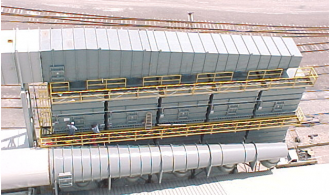Ductwork is the network of differently shaped tubes that you’ll see running around enclosed spaces, taking contaminated air out of the space and frequently bringing fresh air in. Ducts are often also used to heat or cool the environment.
Badly designed and installed ductwork will vibrate, be noisy and will not work efficiently. The Chartered Institution of Building Services Engineers (CIBSE) even issues safety guidance because such duct work may represent a microbiological hazard, so it’s important to understand the component parts of a ductwork system and what they do.
Controlling Vibration and Air Volumes
Ducting has a number of system parts. For example, vibration isolators act to prevent vibration and noise being passed along through the system. If this isn’t done, vibration can even be passed to the building structure.
Terminal units control the amount of air coming into a space, and its temperature. There will usually be several terminal units in various rooms or zones. They manage the air from the central unit, so they usually consist of a connection to the duct which is supplying clean air, and frequently a second connection to the duct which is removing contaminated air. The terminal unit usually has a control which allows the operator to select the volume of air and its temperature.

This control is achieved by a damper, often encountered as a ductwork blast gate damper. The damper sits inside the duct and according to its position, it either blocks the duct – to stop air coming through – or allows air to come through. In industrial ductwork, there are often fire dampers – to stop the possible spread of fire through the ductwork – another design consideration and another reason to use a quality ductwork provider http://www.dustspares.co.uk/Blast-Gate-Damper.html.
Branching Off the Main Duct
Often, systems have a main duct which branches into smaller ducts which go to individual zones or rooms. A fitting known as a take-off is connected to the main duct and used to allow some air into the smaller duct.
It’s then often necessary to fit even smaller ductwork, say in a hotel room. A boot at the bottom of the larger pipe acts as an adapter between the two different sizes of pipe. A stackhead then does the reverse job – connects the smaller pipe to the larger duct.

